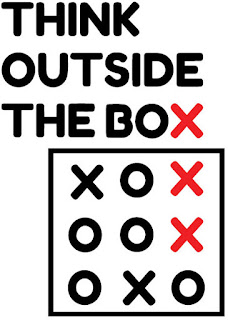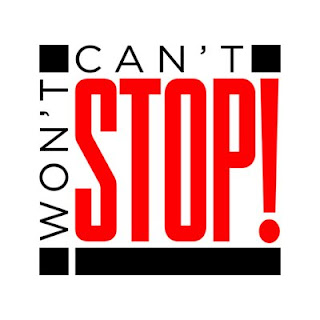My parents (my father in particular) placed an incredibly high value on thinking. Not necessarily memorizing facts and figures, but getting to an actual understanding of a topic and, sometimes more importantly, getting creative with it. Problem solving involved using our education for analyzing the issue, but using our imagination for coming up with a solution. If we couldn't work through a problem, we tried to find a way to work around it. Part of my education was solving riddles and brain teasers. Questions that required heavy doses of lateral thinking.
When I was a kid, we didn't have a lot of money, so my parents were environmentalists out of necessity. Clothes got handed down repeatedly until they wore out, and then we'd still find other uses for them. Any products that came in a container -- the containers got saved/reused. This was so ingrained in me that, on my first day of school, Mom packed my lunch and I brought home the plastic baggie my sandwich was in so she could reuse it. She was in tears as she explained that was something I could throw out.
Remember when companies experimented with toothpaste pumps? Dad saved our empty ones. Not for anything in particular; he just thought he might have need for the pump mechanism at some point in the future. "Save that; I might be able to use it for something" was almost a family motto. Mom saved empty milk jugs for an emergency water supply. Dad saved old peanut butter jars (the glass ones) for everything from loose screws to turpentine. Old newspapers got rolled into "logs" and bound with wire for our fireplace. Then we'd fish the scorched wire out of the ashes and use it for another newspaper log. Everything got used and reused until it couldn't be used for its intended purpose any more. Then we'd reuse it for something else until it was no longer good for that. Then it'd get stripped for parts.
That was all done for financial reasons. We could save money by not throwing away something just because it didn't work any more or was no longer useful. We'd find a use for something because it was cheaper and more efficient than buying something new. Mom & Dad hated living like that, frankly. Not that they were saving money, but that they felt like they had no other choice. Early on, there were arguments about whether they should buy bread or milk that week because they couldn't afford both. I have a massive scar on my finger from when I was 7 because they didn't think they could afford even the co-pay of an emergency room visit to have it stitched up. (This was in the '70s, too, before health care costs really skyrocketed.)
For me, that was just how things were. You saved everything you could, re-purposed it multiple times, and you damn well got your money's worth out of something. It wasn't done FOR environmental reasons, but it still had a positive environmental impact. We were being good stewards of the environment, even if it was incidental, because doing so had a direct, positive affect on our daily lives. I've salvaged vacuums, furniture, bikes, workshop spotlights, long boxes full of comics... all sorts of still useful goods from people's garbage. Even the broken stuff that can be fixed with a little elbow grease, and a few replacement screws or belts. Not only do I wind up with useful goods that I didn't have to pay for (or only pay minimally to fix) but I'm keeping those items out of landfills. Environmentalism by way of saving money, due to creative thinking.
I try to carry those lessons forward to this day. How can I solve this problem in the most efficient way possible? Can I address this issue with things I already have on hand? Can this item that no longer works be fixed? If not, are some of the parts still functional and worth saving? I've been reluctant to leave the house much less go into stores particularly the past few years, but I've been able to care of issues using stuff I had lying around. It's cheaper, it's more enivronmentally friendly, and I don't have to take huge chunk of time to make yet another trip to Home Depot.
When I was a kid, we didn't have a lot of money, so my parents were environmentalists out of necessity. Clothes got handed down repeatedly until they wore out, and then we'd still find other uses for them. Any products that came in a container -- the containers got saved/reused. This was so ingrained in me that, on my first day of school, Mom packed my lunch and I brought home the plastic baggie my sandwich was in so she could reuse it. She was in tears as she explained that was something I could throw out.
Remember when companies experimented with toothpaste pumps? Dad saved our empty ones. Not for anything in particular; he just thought he might have need for the pump mechanism at some point in the future. "Save that; I might be able to use it for something" was almost a family motto. Mom saved empty milk jugs for an emergency water supply. Dad saved old peanut butter jars (the glass ones) for everything from loose screws to turpentine. Old newspapers got rolled into "logs" and bound with wire for our fireplace. Then we'd fish the scorched wire out of the ashes and use it for another newspaper log. Everything got used and reused until it couldn't be used for its intended purpose any more. Then we'd reuse it for something else until it was no longer good for that. Then it'd get stripped for parts.
That was all done for financial reasons. We could save money by not throwing away something just because it didn't work any more or was no longer useful. We'd find a use for something because it was cheaper and more efficient than buying something new. Mom & Dad hated living like that, frankly. Not that they were saving money, but that they felt like they had no other choice. Early on, there were arguments about whether they should buy bread or milk that week because they couldn't afford both. I have a massive scar on my finger from when I was 7 because they didn't think they could afford even the co-pay of an emergency room visit to have it stitched up. (This was in the '70s, too, before health care costs really skyrocketed.)
For me, that was just how things were. You saved everything you could, re-purposed it multiple times, and you damn well got your money's worth out of something. It wasn't done FOR environmental reasons, but it still had a positive environmental impact. We were being good stewards of the environment, even if it was incidental, because doing so had a direct, positive affect on our daily lives. I've salvaged vacuums, furniture, bikes, workshop spotlights, long boxes full of comics... all sorts of still useful goods from people's garbage. Even the broken stuff that can be fixed with a little elbow grease, and a few replacement screws or belts. Not only do I wind up with useful goods that I didn't have to pay for (or only pay minimally to fix) but I'm keeping those items out of landfills. Environmentalism by way of saving money, due to creative thinking.
I try to carry those lessons forward to this day. How can I solve this problem in the most efficient way possible? Can I address this issue with things I already have on hand? Can this item that no longer works be fixed? If not, are some of the parts still functional and worth saving? I've been reluctant to leave the house much less go into stores particularly the past few years, but I've been able to care of issues using stuff I had lying around. It's cheaper, it's more enivronmentally friendly, and I don't have to take huge chunk of time to make yet another trip to Home Depot.











